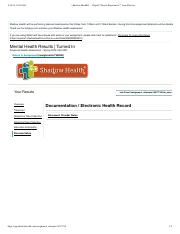Mastering Constitutional Health Questions in Shadow Health Assessments: Step-by-Step Guidance for Effective Patient Interviews

Introduction to Constitutional Health Assessment in Shadow Health
Constitutional health assessments are a foundational component in patient interviews, both in virtual simulations such as Shadow Health and real-world clinical settings. These assessments provide valuable information about a patient’s general health status, identifying issues that may not be directly related to the chief complaint but are nonetheless critical to care planning. In Shadow Health, effective inquiry into constitutional health can reveal patterns or problems such as fatigue, fever, weight loss, or general malaise that influence diagnosis and treatment. This article offers a comprehensive, actionable guide on how to ask about constitutional health within the Shadow Health platform, using proven techniques, real-world examples, and practical steps for implementation. It also addresses how to document findings and adapt to patient barriers, ensuring a robust and holistic assessment process.
Understanding Constitutional Health: What and Why?
Constitutional health refers to the overall physical state of a patient, encompassing symptoms that affect the whole body rather than a specific organ or system. Common constitutional symptoms include fever, chills, fatigue, weight changes, and general malaise. These symptoms serve as early indicators of underlying medical conditions, helping clinicians prioritize issues and plan further investigation or intervention. In Shadow Health, evaluating constitutional health is a graded component that simulates real-life clinical interactions, teaching students to approach health history collection systematically and empathetically [1] .
How to Effectively Ask About Constitutional Health in Shadow Health
When conducting a patient interview in Shadow Health, constitutional health questions should be asked early in the review of systems or immediately after addressing the chief complaint. Begin with open-ended questions to encourage the patient to share relevant information, then follow up with more specific inquiries as needed. Here are detailed steps:
- Start with an Open-Ended Question: For example, “How have you been feeling overall lately?” This invites patients to discuss any general symptoms they may be experiencing.
-
Probe for Specific Symptoms:
Follow up with targeted questions about fever, chills, weight changes, fatigue, or malaise. Sample questions include:
- “Have you experienced any recent illnesses or infections?”
- “Have you noticed any recent changes in your weight-either loss or gain?”
- “Do you feel more tired than usual?”
- “Have you had any episodes of fever or chills?”
- Clarify Duration and Impact: If the patient reports symptoms, ask about their onset, duration, and effect on daily life. For instance, “When did you first notice these symptoms?” or “How have these symptoms affected your ability to work or perform daily activities?”
In the Shadow Health Tina Jones case, students are prompted to ask about constitutional symptoms. Tina often reports “occasional tiredness” but denies recent or frequent illnesses, chills, or fever [3] [4] .
Documenting Constitutional Health Findings in Shadow Health
Accurate documentation is essential for continuity of care and effective communication with other healthcare providers. Within Shadow Health, findings should be recorded in the electronic health record (EHR) immediately after they are collected. Here’s how to document constitutional health:
- Summarize the patient’s responses to your questions about general health, including both positive and negative findings. For example: “Patient denies recent or frequent illnesses, chills, or fever. Reports occasional tiredness. Denies weight changes, nausea, or vomiting.”
- Include relevant follow-up details, such as duration and impact on daily activities if symptoms are present.
- Note any risk factors or related issues, such as noncompliance with medication or barriers to care, as these may influence constitutional symptoms.
This structured approach ensures that the patient’s constitutional health status is clearly communicated and available for reference in subsequent care.
Practical Examples and Sample Dialogue
Effective questioning in Shadow Health simulations requires both clinical knowledge and communication skills. Here are sample exchanges based on real Shadow Health scenarios:
Example 1: Clinician: “Have you had any recent illnesses, fevers, or chills?” Patient: “No, I haven’t been sick lately.”
Example 2: Clinician: “Have you felt more tired than usual lately?” Patient: “Yes, sometimes I feel a bit tired, but nothing out of the ordinary.”

Source: teacherspayteachers.com
Example 3: Clinician: “Have you noticed any changes in your weight over the past few months?” Patient: “No, my weight’s been about the same.”
Using these sample questions and responses in your assessment can help ensure you capture all relevant constitutional health data.
Addressing Barriers and Social Determinants in Constitutional Health Assessment
Beyond standard symptom questions, it is essential to assess for barriers that may impact a patient’s health, including social determinants such as access to healthcare, financial challenges, and living environment. In Shadow Health, these are often explored by asking about:
- Access to healthcare services and medications
- Living arrangements and available support systems
- Work or school stressors and environmental exposures
For instance, Tina Jones reports living with family and sometimes experiencing high stress, but denies financial or transportation barriers to getting care [3] . Proactively asking about these issues can unearth hidden factors affecting constitutional health and guide more effective care planning.
Step-by-Step Implementation in Shadow Health Simulations
To maximize your performance in Shadow Health and ensure comprehensive constitutional health assessment, follow this stepwise process:
- Prepare: Review the patient’s chief complaint and prepare a set of open and closed-ended questions targeting general health symptoms.
- Initiate Interview: Start with rapport-building and clarify the purpose of your questions.
- Ask Systematically: Begin with general questions, then move to specifics-addressing fever, chills, weight changes, and fatigue.
- Document Findings: Record all responses thoroughly in the EHR, noting any positive findings, their duration, and impact.
- Assess Barriers: Inquire about social determinants and other challenges that may influence health.
- Reflect and Plan: After the interview, reflect on your approach and identify areas for improvement, as recommended in Shadow Health’s evaluation criteria [2] .
Alternative Approaches and Common Challenges
Some patients may provide limited information or may not recognize the significance of constitutional symptoms. If this occurs:
- Rephrase Questions: Use simpler language or examples, such as, “Have you felt more tired than usual?” instead of “Do you experience fatigue?”
- Use Empathy and Education: Explain the importance of these questions for their overall health.
- Follow Up: If the patient expresses uncertainty, ask about recent changes in daily activities or appetite as indirect indicators.
Understanding cultural context and health literacy is also crucial. Tailor your questions to the patient’s background and education level, and always confirm understanding before proceeding.
Key Takeaways for Shadow Health Success
Consistent, thorough inquiry into constitutional health is essential for comprehensive assessment in Shadow Health. Proper documentation, attention to social determinants, and adaptability in communication style can enhance both your simulation performance and real-world clinical skills. Remember to:
- Use both open-ended and targeted questions
- Document all relevant findings, both positive and negative
- Assess for and address barriers to health
- Reflect on your approach and seek improvement with each simulation
By mastering these skills, you not only succeed in Shadow Health but also lay the foundation for effective, patient-centered care in your healthcare career.

Source: youtube.com
References
- [1] OnlineNursingPapers.com (n.d.). HEENT Shadow Health Assessment – Tina Jones Subjective Data. Example questions and expert tips for constitutional health assessment.
- [2] NursingWritingServices.com (2020). Tina Jones Shadow Health – NursingWritingServices.com. Overview of assessment objectives and evaluation criteria.
- [3] Studocu.com (2021). Shadow Health Tine Jones Health History Subjective Data. Detailed examples of constitutional health questioning and social determinants.
- [4] Studocu.com (2022). Tina Jones Shadow Health HEENT Subjective Information. Sample documentation and patient dialogue.
- [5] CliffsNotes (2025). Shadow Health Health History Documentation. Patient case summary and documentation guidance.






